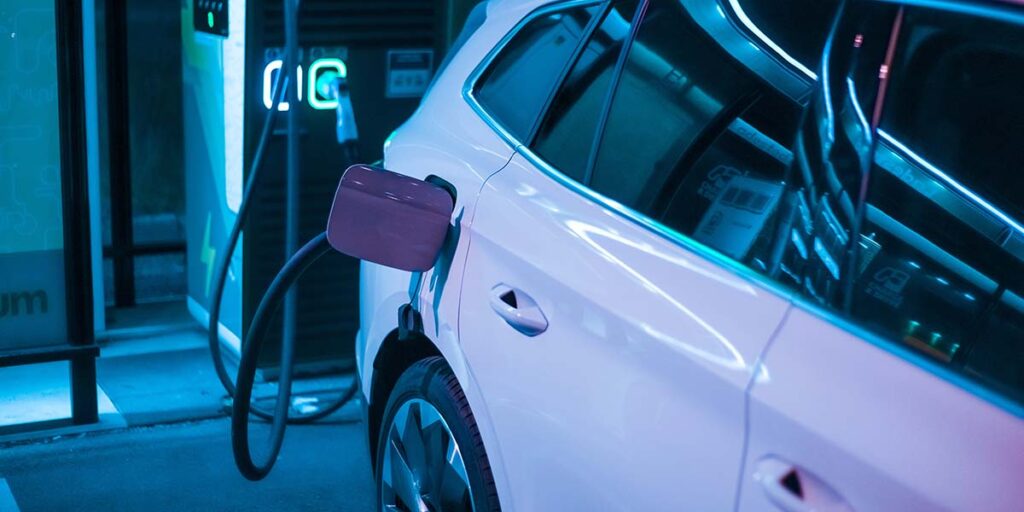Carbon Offsetting, Case Studies
Building a Carbon-Neutral Car: The Case of ŠKODA’s ENYAQ iV
A car factory is not a quiet place. There’s the churn of stamping presses, the rhythmic whir of robotic arms, the distant hum of welding machines stitching together metal skeletons. The air smells of lubricants, of steel dust, of something industrial and permanent. This is where cars are born, where tons of raw materials transform into something smooth and engineered, something that will roll out onto streets and become invisible in traffic.
ŠKODA AUTO makes cars this way, the way every automaker does. But when they set out to produce the ENYAQ iV, they tried something different. The goal was not just to build an electric vehicle but to deliver it with a carbon-neutral balance sheet. It was a logistical and environmental puzzle, a balancing act between emissions that could be reduced and those that had to be offset.
The problem: a carbon footprint that starts before the first mile
Most emissions from a traditional gasoline car happen when it’s driven – burning fuel, sending CO₂ into the air. With an electric vehicle, the equation shifts. The driving part is clean, or at least as clean as the electricity used to charge it. But making an electric car, especially one with a massive battery, leaves its own mark.
Mining metals, refining raw materials, shaping steel and aluminum – every step leaves a carbon trail. Then there’s the factory itself, the energy needed to assemble a car, the trucks or trains that carry it to the showroom. Before an EV even reaches its first owner, it’s already built up an environmental debt.
ŠKODA took stock of this debt. The company calculated emissions at every stage of production: the energy used in manufacturing, the footprint of suppliers, the transport emissions. Then they started cutting.
The strategy: reducing what can be cut, offsetting what can’t
The Mladá Boleslav plant, where the ENYAQ iV is assembled, switched to 100% renewable energy. The company optimized production lines to reduce waste, tightened energy use, and redesigned processes to squeeze carbon out of the system.
Beyond their own walls, they leaned on suppliers. Battery production is one of the largest emissions contributors in EV manufacturing, so ŠKODA pushed partners to use cleaner energy. Materials, too, were scrutinized – what could be sourced more sustainably? What could be reused?
Still, some emissions are unavoidable. That’s where carbon credits came in. For every ton of CO₂ that couldn’t be eliminated, ŠKODA invested in certified climate projects to offset the remainder, effectively zeroing out the car’s production footprint.
The outcome: a car that starts at zero
By the time an ENYAQ iV is delivered, its net emissions are neutral. It doesn’t erase the fact that resources were mined, that steel was melted, that a factory consumed energy. But it balances the equation – a vehicle that, from a carbon standpoint, starts its life clean.
Lessons for the industry
-
Transparency is key
You can’t reduce what you don’t measure. A full carbon audit is the only way to know where to start.
-
Factories matter
The cleanest EV on the road can still be dirty if the plant that made it runs on coal.
-
Supply chains need to step up
No automaker exists in isolation. If suppliers aren’t cutting emissions, the final product carries that weight.
-
Offsets are a tool, not a shortcut
Carbon credits can’t be a substitute for real reductions, but they can close the last gap.
This isn’t a story about one car, or one company. It’s a shift in how things are made, how carbon emissions are counted, and how industries that were built on steel and combustion are finding ways to rethink the ledger.
View source: https://www.skoda.co.uk/news/details/skoda-delivers-enyaq-iv-with-a-carbon-neutral-balance-sheet

